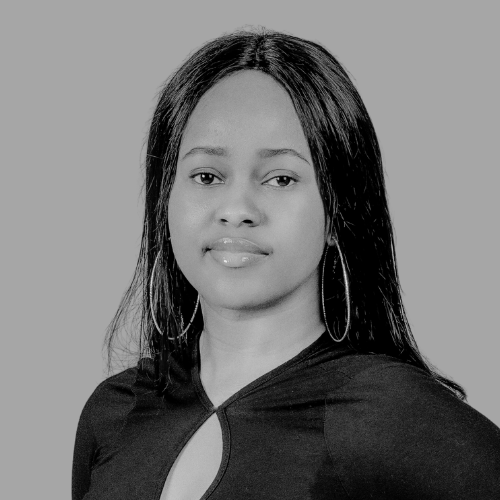A reminder to utilise your investment contributions before tax year end, and how a budget can help you keep track in 2025.
As per our usual yearly chores as adults, like heading to the dentist for your annual check-ups, so my article is serving as a reminder to add your allocation to your Tax-Free investments and Retirement Annuities before the end of the tax year. However, adding funds to your personal investments can be way more fun than visiting the dentist – so let this not be a chore.
February has swiftly crept up upon us, and surely by now, we should be used to how fast the year goes?
I somehow have the feeling that we may never get used to how quickly the months fly by, but nevertheless, it is time to maximize your contributions to your investments if you are in a financial position to do so before the closing date.
I encourage all clients to take proactive steps to optimize their financial planning from a tax and investment perspective. We only have a few weeks left now.
- Plan Your Tax-Free Investment Contributions Accordingly
Tax-free investment accounts are not anything new. Same as our dentist visits. These easily accessible investment accounts allow every South African to grow their savings without paying tax on interest, dividends, or capital gains. The annual contribution limit is R36,000, with a lifetime maximum contribution cap of R500,000. If you haven’t maximized your contributions for this tax year of R36 000, you have ample time to facilitate this transaction. However, again – let time not pass you by as we refer to this at the beginning.
A very important factor is to not exceed your annual limits, as this will trigger a 40% penalty tax on the excess amount that has been contributed. We do not want to leak money to SARS when we have ample parameters to invest within, tax-free.
A main reason why investing in tax-free accounts is specifically advantageous is for long-term financial and investment goals as these accounts can be tailored to align with your investment horizon. We have our Resolute Wealth Tax-Free Portfolio which we offer as a solution to all clients, once we have consulted with them.
Simply put, Mrs. Khumalo, an investor, has contributed R30,000 to her tax-free investment account ending 31 December 2024. By adding an additional R6,000 before the end of 30 February 2025 , she will reach the annual limit of R36,000, maximizing her tax-free growth potential. Therefore, over time, the returns in her account will compounded without the burden of taxes on interest or dividends, making it a highly effective investment strategy focusing on tax.
- Maximizing Your Retirement Annuity Contributions
Contributing to a Retirement Annuity is another effective way to reduce your taxable income. SARS enables you to deduct up to 27.5% of your taxable income and is capped at R350 000 annually. Contributions towards an RA are two-fold i.e. you can receive tax relief but also bump up your retirement savings.
For example, if you contribute R400,000 to your RA in a tax year, only R350000 is deductible due to the annual cap. The remaining R50,000 is carried forward to future tax years as rollover relief. Please note that we encourage speaking with your Wealth Manager to conduct an analysis of the exact amount you can receive back per year as a tax-refund, and this is only a basic example.
By over-contributing, may allow investors the ability to claim the unused portion in subsequent years, therefore ensuring that no tax-deductible contributions are wasted.
As a reminder, this is one tool to enhance long-term financial security whilst benefiting from SARS tax incentives.
Thus, by staying on top of your game by being organized and taking advantage of tax-saving opportunities like tax-free investments and RAs, investors can meet SARS’ deadline with confidence and certainty.
The Importance of Budgeting in Your Personal Finances
Budgeting is boring. It’s tedious, it’s annoying and no one likes to read bad news. Bad news is that once again we have overspent on Uber Eats when we promised ourselves we were going to be better.
Budgeting allows for realisation that there is room for improvement, and some expenses are within our control, and by tracking your income and expenses, you gain a clear understanding of where your money is going.
A well-structured budget plan helps ensure you have sufficient funds to meet monthly expenses and helps restructure some items on the bank statement that don’t need to be there. I am a believer in working smarter and harder to make your budget more attractive – going and canceling your fun activities, your Netflix account cutting down on essential food items, and downgrading your lifestyle may not be the best route. I try to implement ways to increase the inflow of funds, and not always focus on the outflow of funds.
If you would like a more in-depth budget analysis, please feel free to reach out and we can create one specifically tailored to your financial needs.
How to Create a Budget, in a Nutshell:
- Tracking your Income and Expenses: Start by recording all sources of income and every expense over a month. Use tools like your analyser in your banking app, spreadsheets or budgeting apps to categorize expenses into topics (e.g., rent, clothes, groceries).
- Allocate Your Income: Divide your income into fixed percentages for essentials savings, and ad-hoc spending. You can easily adjust your allocation spend to the sections within the budget.
- Review and Amend: At the end of each month, review your budget to identify areas where you can cut back or reallocate funds. Constant review is necessary, but don’t get fixated on the figures – remember, have fun.
- Plan for unforeseen Expenses: Set aside funds for any unwelcoming expenses that may crop up. The goal is to not rely on your investments to cater for ad-hoc emergency incidents.
Creating a budget can also prevent financial stress, which is advisable to avoid!
Budgeting also instills control; the numbers are in your hands.
- Compile your Documents Sooner rather than Later
The stress of last-minute document tracing is avoidable when it comes to your tax submissions. You can simply create a dedicated folder for your documents, and this can be done monthly whilst doing your budget, and ultimately will help you kill two birds with one stone.
Feel free to reach out to us to discuss your financial future.




























